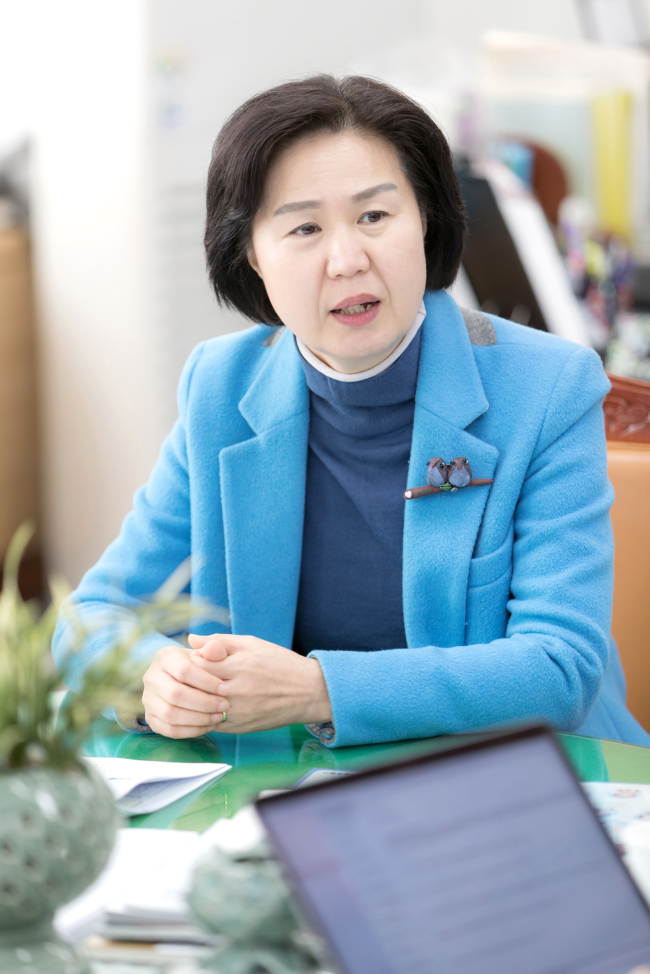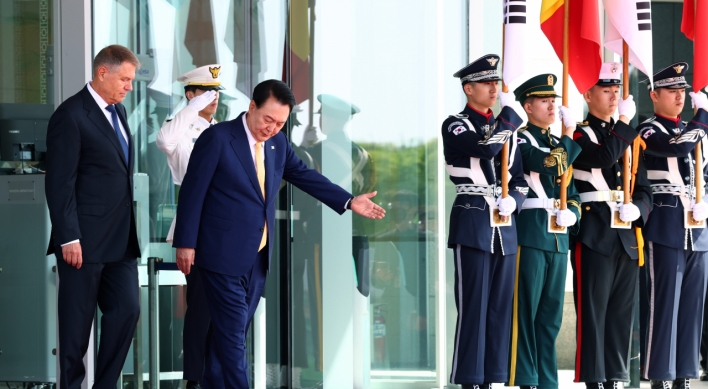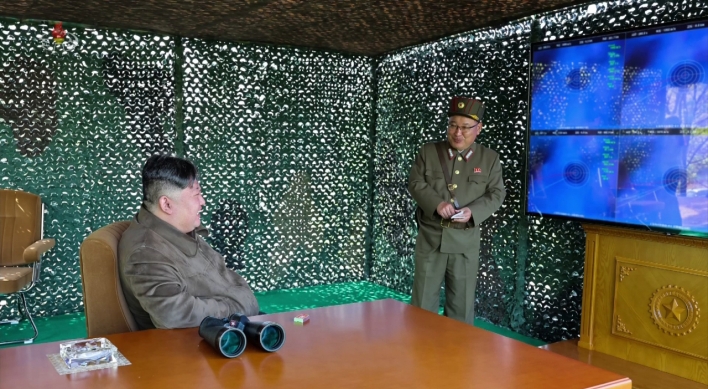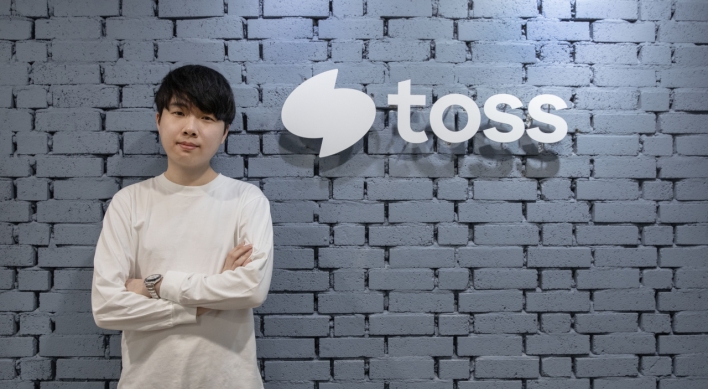Local districts should do more to tackle low birthrate, says Yangcheon District Mayor
By Bak Se-hwanPublished : March 29, 2018 - 14:24
A low birthrate is the new normal in South Korea. The country last year marked 1.05 births per woman, an all-time low since the statistics bureau started compiling such data. A total 358,000 babies were born in 2017, down 11.9 percent from a year ago.
To keep its population level stable, the country needs to build a family-friendly environment and atmosphere to encourage young couples to have children amid a quickly aging population and shrinking workforce, according to Yangcheon District Mayor Kim Soo-young.
To keep its population level stable, the country needs to build a family-friendly environment and atmosphere to encourage young couples to have children amid a quickly aging population and shrinking workforce, according to Yangcheon District Mayor Kim Soo-young.

The southwestern district of Seoul, with a population of 480,000 of the capital city’s approximate 10 million, was recognized in January as a “women-friendly city” by the Ministry of Gender Equality and Family for the district’s long-term female employment, safety and housing policies.
“We see more young couples who are childless today, and it’s not surprising,” Kim said in an interview with The Korea Herald at Yangcheon District Office. “Most of them worry about the increasing cost of living, driven in particular by child care and high housing prices, and that they might get pushed out of work if they choose to have a baby. Childlessness is not a problem of individuals, but a problem for the society that needs to address it in a comprehensive manner,” Kim said.
The government has spent 80 trillion won ($75 billion) in the past decade to deal with the low birthrate, including in cash rewards for having babies.
But in January, the number of newborns here dipped yet again, according to government data Wednesday, in the latest sign of the chronic decrease.
Often labeled “motherly” for her nonauthoritarian quality and active communication with people, the 53-year-old politician who was elected as the first female head of the district in 2014 said she believes the government’s financial aid alone will not curb the population decline.
“Low birthrate and a rapidly aging population have become nationwide problems that a local district alone cannot solve dramatically. But it is the responsibility of each district to step in to fill the gap where the government is not yet able to provide support to make people want to have and raise children,” Kim said.
For this reason, the district has provided more than just housing subsidies for people who are starting out in their careers or newlywed couples of up to eight years.
The number of affordable district-run child care centers has increased to 66, according to the district. The district also runs child-friendly facilities like toy libraries where kids can play with toys and later return them at a cost of 1,000 won, and local family centers where mothers can drop in for extra support for breast-feeding or other baby-related issues. Free pregnancy and parenting courses and meditation programs are more favorite options for family-planning mothers and fathers, the district explains.
Separately, Kim said Yangcheon aims to become a “Child Friendly City” recognized by the United Nations Children’s Fund. Last year, it enacted an ordinance that creates room in the budget for a child-friendly legal framework and promotes child rights strategies, evaluation, health and education.
“It is our goal to create an urban environment that guarantees children’s rights to essential services, such as health, protection, education and participation,” she said.
“And that’s in connection with the district’s already existing women-, child care- and elderly-friendly policies,” she added.
By Bak Se-hwan (sh@heraldcorp.com)


![[AtoZ into Korean mind] Humor in Korea: Navigating the line between what's funny and not](http://res.heraldm.com/phpwas/restmb_idxmake.php?idx=644&simg=/content/image/2024/04/22/20240422050642_0.jpg&u=)



![[Herald Interview] Why Toss invited hackers to penetrate its system](http://res.heraldm.com/phpwas/restmb_idxmake.php?idx=644&simg=/content/image/2024/04/22/20240422050569_0.jpg&u=20240422150649)

![[Graphic News] 77% of young Koreans still financially dependent](http://res.heraldm.com/phpwas/restmb_idxmake.php?idx=644&simg=/content/image/2024/04/22/20240422050762_0.gif&u=)





![[Exclusive] Korean military to ban iPhones over security issues](http://res.heraldm.com/phpwas/restmb_idxmake.php?idx=652&simg=/content/image/2024/04/23/20240423050599_0.jpg&u=)



